Plot summary
After their recent defeat, the hamlets and villages of Derbyshire are no longer ringing with the wild shouts of Bonny Prince Charlie's Highland Brigade; instead, troops loyal to King George are looking for those accused of high treason and are offering a reward of twenty guineas for the death of any traitor or rebel.
Philip James Gascoyne, eleventh Earl of Stretton, is in hiding, in fear for his life after being wrongly accused by Sir Humphrey Challoner of being a traitor to the King.
For months Philip has been a fugitive, disguised in rough clothes and hiding in odd places, trusting no-one, but now he has been given shelter and a cover by honest John Stitch, the local blacksmith, and is pretending to be his nephew while trying to get a note to his sister, the beautiful Lady Patience Gascoyne.
John Stich is also friends with the notorious Beau Brocade, a masked highwayman who roams the moors holding up coaches so he can steal from the rich and give to the poor. Beau Brocade is actually Captain Jack Bathurst of His Majesty's White Dragoons, a handsome but tragic figure on whose head the Government has put the price of a hundred guineas.
The blacksmith gets Beau Brocade to deliver a letter from Philip to his sister and a couple of days later she turns up at his forge in her coach. Reunited with his beloved sister, Philip gives Patience a packet of letters which prove his innocence and asks her to take them to London and clear his name.
Just as they are discussing when she can leave, they spot Sir Humphrey's coach in the distance, Philip goes back into hiding while Patience heads towards the inn in Aldwark village to get a couple of hours rest for herself and the horses before starting the journey to London.

Earl of Pembroke is a title in the Peerage of England that was first created in the 12th century by King Stephen of England. The title, which is associated with Pembroke, Pembrokeshire in West Wales, has been recreated ten times from its original inception. Due to the number of creations of the Earldom, the original seat of Pembroke Castle is no longer attached to the title.

Baroness Emma Orczy, usually known as Baroness Orczy or to her family and friends as Emmuska Orczy, was a Hungarian-born British novelist and playwright. She is best known for her series of novels featuring the Scarlet Pimpernel, the alter ego of Sir Percy Blakeney, a wealthy English fop who turns into a quick-thinking escape artist in order to save French aristocrats from "Madame Guillotine" during the French Revolution, establishing the "hero with a secret identity" in popular culture.

Thomas of Woodstock, Duke of Gloucester was the fifth surviving son and youngest child of King Edward III of England and Philippa of Hainault.
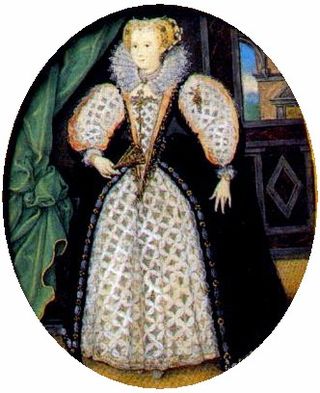
Penelope Rich, Lady Rich, later styled Penelope Blount was an English court office holder. She served as lady-in-waiting to the English queen Anne of Denmark. She was the sister of Robert Devereux, 2nd Earl of Essex, and is traditionally thought to be the inspiration for "Stella" of Sir Philip Sidney's Astrophel and Stella sonnet sequence. She was married to Robert Rich, 3rd Baron Rich and had a public liaison with Charles Blount, Baron Mountjoy, whom she married in an unlicensed ceremony following her divorce from Rich. She died in 1607.
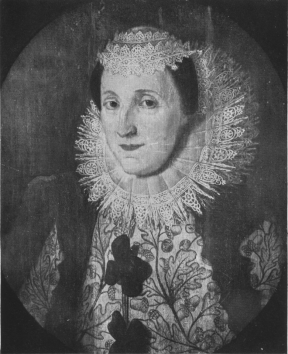
Alice Barnham, Viscountess St Albans was the wife of English scientific philosopher and statesman Francis Bacon.
Sir Aldingar is Child ballad 59. Francis James Child collected three variants, two fragmentary, in The English and Scottish Popular Ballads. All three recount the tale where a rebuffed Sir Aldingar slanders his mistress, Queen Eleanor, and a miraculous champion saves her.

Wyatt's Rebellion was a limited and unsuccessful uprising in England in early 1554 led by four men, one of whom was Sir Thomas Wyatt. It was given its name by the lawyer at Wyatt's arraignment, who stated for the record that "this shall be ever called Wyat's Rebellion". The rebellion arose out of concern over Queen Mary I's determination to marry a foreigner, Philip II of Spain, and to return England to the Catholic Church and papal authority. The uprising failed, with consequences for the rebels that ranged from death to forgiveness.

After the final defeat of Royalists in the English Civil War against Oliver Cromwell's New Model Army at the Battle of Worcester on 3 September 1651, the future Charles II of England was forced to flee England. With the support of a network of Royalist gentry, Charles first attempted to escape into Wales, then to Bristol disguised as a servant, then to the south coast at Charmouth. Finally, he rode east to Shoreham from where he sailed for France on 15 October 1651. During the six-week flight, he passed through numerous English counties, and at one point was forced to hide in an oak tree on the grounds of a house that was being searched by Parliamentarian soldiers. A £1000 reward had been offered for information leading to Charles's capture.

Jamaica Inn is a 1939 British adventure thriller film directed by Alfred Hitchcock and adapted from Daphne du Maurier's 1936 novel of the same name. It is the first of three of du Maurier's works that Hitchcock adapted. It stars Charles Laughton and Maureen O'Hara in her first major screen role. It is the last film Hitchcock made in the United Kingdom before he moved to the United States.
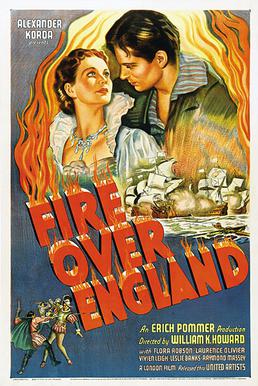
Fire Over England is a 1937 London Film Productions film drama, notable for providing the first pairing of Laurence Olivier and Vivien Leigh. It was directed by William K. Howard and written by Clemence Dane, nominally from the 1936 novel Fire Over England by AEW Mason. Leigh's performance in the film helped to convince David O. Selznick to cast her as Scarlett O'Hara in his 1939 production of Gone with the Wind. The film is a historical drama set during the reign of Elizabeth I focusing on England's victory over the Spanish Armada.
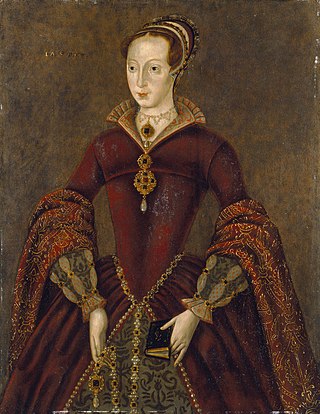
Lady Jane Grey, also known as Lady Jane Dudley after her marriage and as the "Nine Days' Queen", was an English noblewoman who claimed the throne of England and Ireland from 10 to 19 July 1553.
"The Marriage of Sir Gawain" is an English Arthurian ballad, collected as Child Ballad 31. Found in the Percy Folio, it is a fragmented account of the story of Sir Gawain and the loathly lady, which has been preserved in fuller form in the medieval poem The Wedding of Sir Gawain and Dame Ragnelle. The loathly lady episode itself dates at least back to Geoffrey Chaucer's "Wife of Bath's Tale" from The Canterbury Tales. Unlike most of the Child Ballads, but like the Arthurian "King Arthur and King Cornwall" and "The Boy and the Mantle", "The Marriage of Sir Gawain" is not a folk ballad but a song for professional minstrels.
"The Witness for the Prosecution" is a short story and play by British author Agatha Christie. The story was initially published as "Traitor's Hands" in Flynn's, a weekly pulp magazine, in the edition of 31 January 1925.

The Black Shield of Falworth is a 1954 American Technicolor historical adventure film from Universal-International, produced by Robert Arthur and Melville Tucker and directed by Rudolph Maté. It stars Tony Curtis, Janet Leigh, David Farrar, Herbert Marshall, and Torin Thatcher. The screenplay, set in Medieval England, was adapted by Oscar Brodney and is based on Howard Pyle's 1891 novel Men of Iron. The original music score was composed by Hans J. Salter although his name does not appear in the screen credits. The only musical notation is given as: "Music Supervision by Joseph Gershenson". Made Universal's music department head in 1940, Gershenson's name appeared on nearly every film made by that studio from 1949-1969.

The Talisman Ring is a historical romance novel by Georgette Heyer, first published in 1936. Set in 1793, in the Georgian era, the action takes place in Sussex, where Heyer then lived.

Bella at Midnight is a fantasy novel for children by Diane Stanley. The story is based on the fairy tale Cinderella. It was first published in 2006.
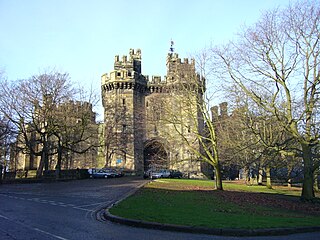
The Samlesbury witches were three women from the Lancashire village of Samlesbury – Jane Southworth, Jennet Bierley, and Ellen Bierley – accused by a 14-year-old girl, Grace Sowerbutts, of practising witchcraft. Their trial at Lancaster Assizes in England on 19 August 1612 was one in a series of witch trials held there over two days, among the most infamous in English history. The trials were unusual for England at that time in two respects: Thomas Potts, the clerk to the court, published the proceedings in his The Wonderfull Discoverie of Witches in the Countie of Lancaster; and the number of the accused found guilty and hanged was unusually high, ten at Lancaster and another at York. All three of the Samlesbury women were acquitted.
Serena Mary Rothschild, Baroness Rothschild was a British Thoroughbred racehorse owner and the wife of Jacob Rothschild, 4th Baron Rothschild.
Garret Moore, 1st Viscount Moore PC (I) was an Anglo-Irish politician and peer.
Queenpot was a British Thoroughbred racehorse and broodmare. She won three times as a juvenile in 1947, with her biggest success of the year coming in the Prendergast Stakes at Newmarket Racecourse. In the following spring she took the Katheryn Howard Stakes before recording her most significant victory in the 1000 Guineas. As a broodmare she produced several minor winners including the dam of Northjet.














